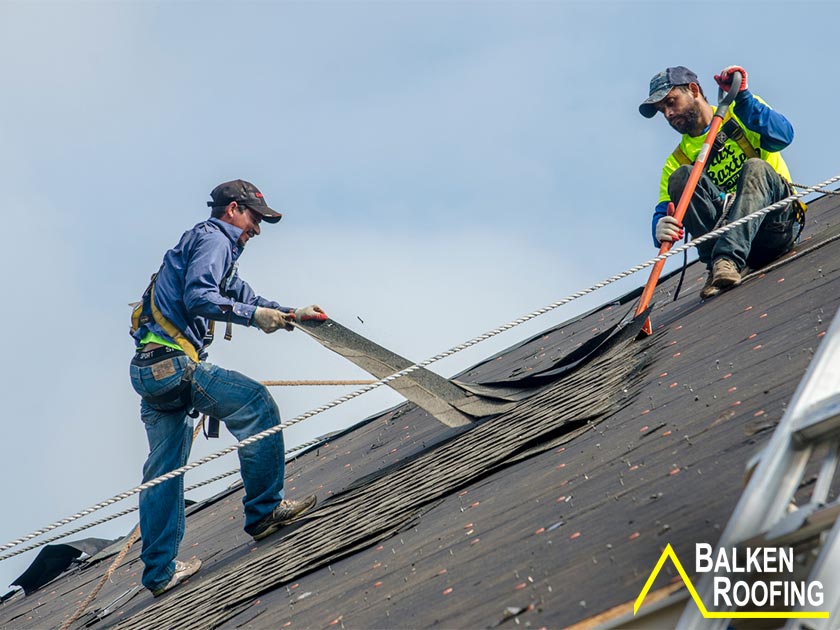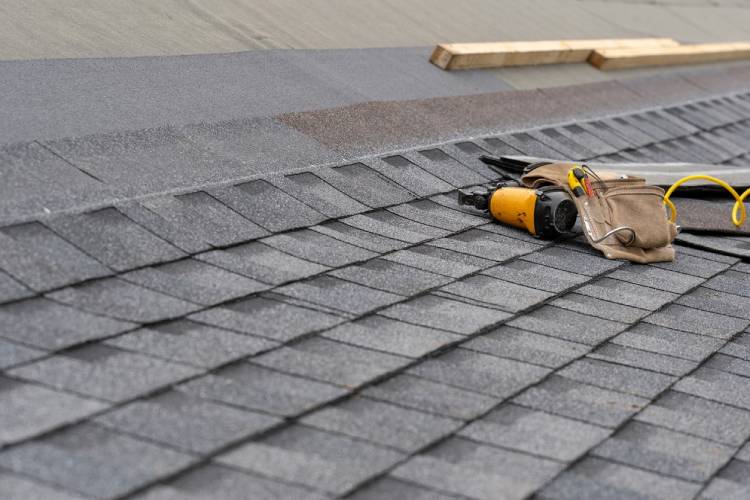Signs it’s time for a Roof Replacement you need to know
Vital Tips for Effective Roofing System Upkeep From Leading Roof Specialists
Keeping a roofing is crucial for the durability of a home. Leading roof specialists worry the importance of routine examinations to catch problems early. Furthermore, appropriate maintenance methods can avoid costly repair work down the line. Property owners frequently overlook simple jobs that contribute to a roofing's health and wellness. Recognizing these vital pointers can make a considerable difference. Several might question what details strategies are most efficient.
Normal Inspections: Key to Very Early Trouble Detection
Although lots of property owners may neglect their roofs, normal evaluations play a necessary role in identifying prospective problems before they intensify into costly repairs. A thorough examination can expose indicators of wear, such as missing out on roof shingles, fractures, or rusted flashing. These apparently minor troubles can result in significant leakages, architectural damage, or mold growth if left unaddressed.
Professionals recommend conducting assessments a minimum of twice a year, ideally in the spring and fall. This aggressive method permits homeowners to catch concerns early, guaranteeing the durability of the roofing system. In addition, after extreme climate occasions, such as storms or hefty snowfall, an inspection is essential to evaluate any type of resulting damages. Regular evaluations not just enhance the roofing's lifespan yet additionally offer comfort, knowing that the home is well-protected. By prioritizing this facet of maintenance, house owners can prevent unexpected expenditures and maintain the honesty of their home.
Keep Gutters and Downspouts Clear
Normal upkeep of downspouts and seamless gutters is crucial for preventing water damage to a home. Blocked rain gutters can bring about overruning water, which might harm the roof, structure, and home siding. To maintain peak feature, house owners ought to consistently examine and clean rain gutters, especially during autumn when leaves and particles accumulate.
Making use of a durable ladder, individuals must get rid of any type of clogs, assuring that water moves openly via the system. It is suggested to examine downspouts for obstructions also; an obstructed downspout can trigger water to back up and overflow.
Furthermore, home owners ought to validate that gutters are securely attached and properly sloped to guide water towards downspouts. Installing seamless gutter guards can likewise help reduce debris build-up and lower maintenance frequency. By keeping gutters and downspouts clear, house owners can shield their building from pricey water damages and extend the lifespan of their roof.
Trim Overhanging Branches
To assure the durability of a roof, home owners ought to focus on trimming overhanging branches that pose a threat to their roof. Branches can create significant damage with numerous means, including direct get in touch with throughout tornados or hefty winds, which may result in scrapes or slits in roof covering products. In addition, overhanging branches can facilitate the development of moss and algae, as they offer shade and wetness retention, compromising the roofing's stability.
On a regular basis reviewing the range between tree arm or legs and the roof is crucial. Homeowners must intend to preserve a risk-free clearance of at the very least 6 feet to decrease potential risks. Making use of specialist tree solutions can assure risk-free and appropriate cutting, avoiding accidental damage to the home. By proactively handling tree growth, homeowners can safeguard their roofings, enhancing their life expectancy and lowering future maintenance costs. To conclude, regular branch trimming is an important aspect of reliable roofing upkeep.
Check for Signs of Damage
Evaluating a roofing for signs of damages is important for maintaining its structural honesty and longevity (Roof Replacement). Home owners need to carry out aesthetic checks at the very least two times a year, focusing on common indications of problems. Missing, split, or crinkled roof shingles can signal wear and tear, while staining might suggest water damage or leaks. On top of that, house owners ought to analyze blinking around smokeshafts, vents, and skylights for rust or voids, as these areas are prone to leaks
Seamless gutters and downspouts ought to be removed of particles, as obstructions can cause water pooling and succeeding roof covering damages. Interior evaluations are additionally important; water stains on wall surfaces or ceilings might suggest roofing leakages. Furthermore, mold growth in attic rooms can suggest long term wetness direct exposure. By on a regular basis looking for these signs of damages, homeowners can attend to problems early, preventing pricey repair work and guaranteeing the roof covering remains in prime condition.
Maintain Correct Ventilation
Correct ventilation is vital for preserving a healthy roofing system and lengthening its lifespan. Sufficient air movement avoids dampness build-up, which can cause mold and mildew and structural damages. In addition, changing ventilation according to the seasons can optimize power effectiveness and comfort within the home.

Significance of Air movement
While lots of house owners may overlook the importance of air flow, maintaining proper air flow is important for the long life of a roofing system. Sufficient air movement helps manage temperature within the attic, preventing warmth accumulation that can harm roofing products. This law likewise contributes to energy performance, reducing the demand for too much a/c throughout warm months. In addition, correct ventilation helps in dispersing air equally, decreasing the risk of deterioration on roof covering elements. Experts suggest setting up vents tactically to promote a continual flow of air, which helps in preserving a perfect environment. As a result, homeowners must focus on air flow when conducting roof upkeep, ensuring that their roofings continue to be intact and functional for years ahead.
Preventing Moisture Build-Up
Maintaining adequate air flow not just controls temperature yet additionally plays an essential duty in preventing dampness build-up within the attic space. Appropriate air flow allows for the continuous circulation of air, which aids to eliminate excess humidity that can gather from different resources, including seasonal changes and daily activities. Without adequate air movement, dampness can result in mold and mildew growth, wood rot, and damage to insulation, compromising the architectural integrity of the roofing system. Mounting vents, such as soffit and ridge vents, can enhance air blood circulation, making sure that damp air is expelled while fresh air is attracted. Routinely evaluating and cleaning up these vents is important to preserving their efficiency, thus guarding the roof covering and expanding its life expectancy.
Seasonal Air Flow Adjustments
Seasonal modifications considerably impact the air flow needs of a roofing. In warmer months, boosted temperature levels can catch warm in the attic room, resulting in potential damages and greater power expenses. Ample air flow enables warm to leave, promoting a cooler interior setting. Conversely, during chillier months, appropriate air flow protects against dampness buildup from snow and ice, which can bring about mold and mildew and architectural concerns. Roofing experts suggest changing air flow systems seasonally, including using ridge vents and soffit vents for peak airflow. Routine evaluations must assure that any obstructions, such as debris or insulation, are removed. By maintaining suitable air flow throughout the year, home owners can protect their roofings and improve energy effectiveness.
Tidy Your Roofing System Surface
Cleansing the roofing system surface is essential for protecting its the original source stability and prolonging its life expectancy. A tidy roofing system not just improves the home's visual charm but additionally protects against the buildup of algae, moss, and debris, which can contribute to wear and tear. Regular cleansing aids to eliminate pollutants that might trap dampness, causing possible leakages and architectural damage.
Property owners should take into consideration using a soft-bristle brush or a stress washer with a reduced setup to carefully get rid of dust and growths from the roof covering. It is necessary to stay clear of extreme chemicals that can harm roof products. Furthermore, safety and security preventative measures must be taken; using a durable ladder and putting on ideal gear is vital to protect against mishaps.

Set Up Specialist Evaluations and Fixings
Regular roofing upkeep involves even more than simply keeping the surface area tidy; it additionally needs professional evaluations and repair work to ensure long-term resilience. Engaging a certified roof specialist for regular assessments is essential, as they can determine potential problems that may go unnoticed by the inexperienced eye. These experts possess the expertise to analyze the roof covering's problem, checking for indications of wear, damages, or leakages that can intensify into costly repair work if left unaddressed.
Setting up these assessments a minimum of two times a year, ideally in spring and loss, helps verify that any necessary repairs are done immediately. In addition, an expert can recommend safety nets to extend the roofing system's lifespan. Home owners must prioritize these assessments as part of their overall maintenance approach, understanding that timely interventions can secure their financial investment and boost their home's value. Ultimately, aggressive treatment with professional solutions is essential to accomplishing a reputable and resistant roofing system.
Regularly Asked Inquiries
How Often Should I Replace My Roofing?
The frequency of roofing substitute depends upon products and environmental aspects. Generally, asphalt roof shingles last 20-30 years, while metal roofing systems might withstand 40-70 years. Routine examinations aid determine the suitable timing for replacement.
What Are the very best Materials for Roofing?
The most effective materials for roof consist of asphalt shingles, steel, floor tile, and slate. Each material uses unique advantages, such as toughness, aesthetic appeals, and power effectiveness, permitting property owners to select according to their specific demands and choices.
Can I Perform My Own Roof Covering Services?
The question of performing one's own roof covering fixings usually occurs (Roof Repair). While some people might have the skills, it is typically advisable to seek advice from specialists to assure safety and security and proper adherence to building regulations and requirements

Exactly How Do Climate Condition Impact Roof Maintenance?
Climate condition considerably influence roof maintenance. Severe temperature levels, hefty rains, and snow accumulation can trigger damage, while regular evaluations throughout moderate weather condition guarantee prompt repairs, protecting the roof's integrity and prolonging its life-span successfully.
What Is the Typical Lifespan of a Roofing?
The average life expectancy of a roof varies substantially based on materials and ecological variables. Usually, asphalt tiles last around 15 to 30 years, while metal roofings can sustain 40 to 70 years with correct upkeep and treatment.
Numerous property owners might ignore their roof coverings, regular examinations play a vital duty in identifying potential concerns before they escalate right into costly repair my blog services. To guarantee the longevity of a roofing system, home owners ought to prioritize cutting overhanging branches that present a danger to their roof system. By proactively handling tree growth, property owners can secure their roofings, improving their life-span and reducing future maintenance expenses. Evaluating a roofing for signs of damages is essential for see this site maintaining its structural stability and durability. While lots of house owners might neglect the significance of airflow, maintaining appropriate ventilation is vital for the long life of a roof.